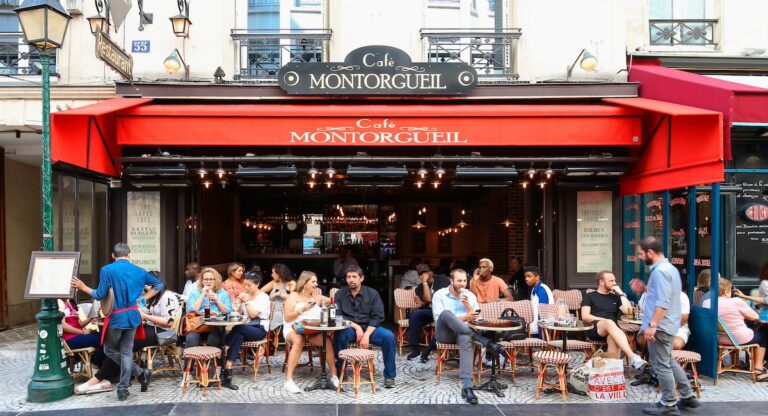I’ve been thinking a lot about buffets. As many of you likely already know, there was a fascinating article this week in the New Yorker, about the highest-grossing restaurant in France. And it’s not some trendy Parisian Michelin-starred restaurant, but a buffet in the small southern city of Narbonne, called Les Grands Buffets.
Now, normally I would never think of the buffet as something that French people would be going jambon over. I’ve always appreciated the contemporary French dining style, with each dish coming out in its own time, forcing you to relax and not rush the meal. Usually three courses (appetizer, main course, dessert), this style of dining is built into French culture, which is why so many French restaurants offer a three-course prix-fixe menu. But apparently, buffets have recently experienced a resurgence in popularity in France, largely run by Chinese-French restaurateurs. (Which tracks, given the popularity of communal-style dining in much of China.)
So I decided to look into the (very French) history of the buffet.
King Louis XIV, aka the Sun King, is credited with the accidental invention of the buffet. In the 17th century, he would often host gatherings in his private apartments, where food would be laid out as a spread, instead of serving dishes one after the other. This style became so popular across Europe that it was dubbed service à la française. And, in many ways, these wanton feasts, where everything was up for grabs and excess encouraged, came to reflect the buffets we know today. For larger gatherings, instead of making more of the same food, cooks would make a greater variety of dishes, so it would be difficult to try everything on the table if you were eating with dozens of others. (The idea of having so many options without actually being able to sample them all is one any modern buffet-goer might recognize.)
So Marie Antoinette is less likely to have said, “Let them eat cake,” than she might have been to say, “Let them eat cake… and duck, and oysters, and potatoes, and anything else they can fit on a plate.”
The term “buffet” itself comes from the 18th century French word bufet, which is translated, depending on the source, as a stool, table, or cabinet. This would make sense, as “buffet” is also used today to describe a certain type of cabinet or credenza, of the kind you might serve a culinary buffet on.
Commercial buffets became popular in France in the 19th century, when the dawn of railroad travel made train station buffets an easy fix for hungry travelers. But it was the Swedes who brought the concept to the world, calling it a “smorgasbord” instead. Americans took the idea and ran with it (though they kept the original French name), and buffets became common dining fixtures around the world.
Ironically, as buffets started gaining traction around the world, they were going out of style in France. During the 19th century, service à la française was replaced by service à la russe. This is the more formal style we see today at traditional restaurants, in which one course is served after the other. But in France in the 1800s, there may have been up to 15 courses, instead of the 3 we are accustomed to today. The gradual dropping of many of these traditional courses is actually the reason why Americans use the word entrée to mean the main course, while the French use it to refer to the appetizer. (You can read more on that here.)
So our beloved French gastronomy has existed in many forms, from the casual buffet to the elaborate service à la russe, back down to a manageable prix-fixe menu, and finally, apparently, all the way back to the buffet. But throughout French history, it’s the food that’s always been important, not the way it’s served.
Ciao,
Catherine Rickman
Managing Editor, frenchly.us
Stay in touch! I’d love to hear from you: [email protected].






